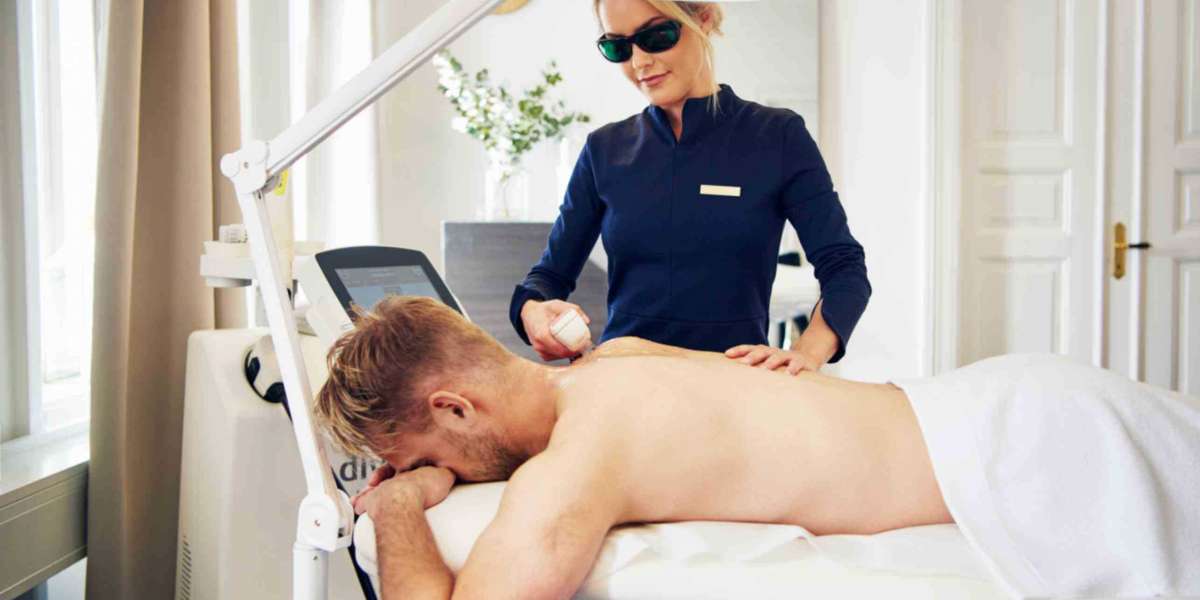For millions of Americans dealing with chronic or acute pain, finding an effective and non-invasive solution can feel like an uphill battle. From managing back pain to alleviating joint discomfort, laser therapy for pain has emerged as a promising option for individuals seeking relief without the need for medication or surgery. But what exactly is laser therapy for pain, and how does it work?
This blog delves into the science behind this innovative treatment, its benefits, and why it’s gaining popularity across the United States.
Understanding Laser Therapy for Pain
Laser therapy, also known as low-level laser therapy (LLLT) or photobiomodulation, uses focused light energy to stimulate the body's natural healing processes. The procedure involves applying a specialized laser device to the skin over the affected area. This light penetrates deep into tissues, triggering cellular responses that promote healing, reduce inflammation, and alleviate pain.
Unlike surgical lasers that cut tissue, therapeutic lasers work on a cellular level to repair and regenerate tissues without causing harm. This makes laser therapy a safe and non-invasive option for pain management.
How Does Laser Therapy Work?
The effectiveness of laser therapy lies in its ability to target cells and stimulate biological processes. Here’s how it works step by step:
1. Light Penetration
The laser emits light in a specific wavelength that penetrates through the skin and into the underlying tissues. Depending on the type of laser used, this light can reach depths of up to 5 centimeters.
2. Cellular Stimulation
The light interacts with the mitochondria—the powerhouse of the cell—and triggers a process called photobiomodulation. This increases cellular energy production, improving the cell's ability to repair and regenerate.
3. Reduced Inflammation
Laser therapy helps reduce the production of inflammatory markers in the body, which is particularly beneficial for conditions like arthritis, tendonitis, and muscle strains.
4. Increased Blood Flow
By improving circulation in the targeted area, laser therapy ensures that oxygen and essential nutrients reach the damaged tissues, accelerating healing.
5. Pain Relief
Finally, laser therapy stimulates the release of endorphins, the body’s natural painkillers, and blocks pain signals from reaching the brain.
Conditions That Benefit from Laser Therapy
Laser therapy has shown effectiveness in managing a wide range of conditions, including:
Chronic Pain: Back pain, neck pain, and joint pain.
Arthritis: Both osteoarthritis and rheumatoid arthritis.
Sports Injuries: Muscle strains, sprains, and tendonitis.
Neuropathic Pain: Diabetic neuropathy, carpal tunnel syndrome, and sciatica.
Post-Surgical Recovery: Reducing pain and speeding up healing after surgery.
Advantages of Laser Therapy for Pain Relief
1. Non-Invasive
Unlike surgeries or injections, laser therapy is completely non-invasive. There are no incisions, and it doesn’t require any recovery time.
2. Drug-Free
For those looking to avoid medications due to side effects or dependency concerns, laser therapy offers a drug-free alternative for managing pain.
3. Quick Treatment Sessions
Most laser therapy sessions take just 5 to 20 minutes, making it a convenient option for people with busy schedules.
4. Safe for All Ages
Whether you’re an athlete, a senior, or recovering from surgery, laser therapy can be tailored to meet your specific needs.
5. Proven Effectiveness
Studies have demonstrated the efficacy of laser therapy in reducing pain and improving functionality for various conditions. Many patients report substantial changes after just a few sessions.
What to Expect During a Laser Therapy Session
If you’re considering laser therapy for pain, it’s helpful to know what a typical session involves. Here’s what you can expect:
Initial Consultation: Your therapist will evaluate your condition, discuss your symptoms, and determine the best treatment plan.
Preparation: The treatment area will be exposed, and you’ll be positioned comfortably. Protective eyewear may be provided to shield your eyes from the laser light.
Application: The laser device will be applied directly to the skin over the affected area. The procedure is usually painless, however you can get a warm feeling.
Post-Treatment: There’s no downtime, and you can resume your daily activities immediately.
Is Laser Therapy Right for You?
While laser therapy offers numerous benefits, it’s important to consult with a qualified healthcare professional to determine if it’s the right option for your specific condition. It may not be suitable for individuals with certain medical conditions, such as cancer or active infections, and should be avoided in areas with open wounds.
Laser therapy is particularly beneficial for those who:
Have not found relief with traditional pain management methods.
Prefer non-invasive treatments.
Want to avoid or delay surgery.
Final Thoughts
Laser therapy for pain is transforming the way Americans approach pain management. Its non-invasive nature, coupled with its ability to stimulate natural healing, makes it an appealing option for individuals looking to regain mobility and improve their quality of life.














